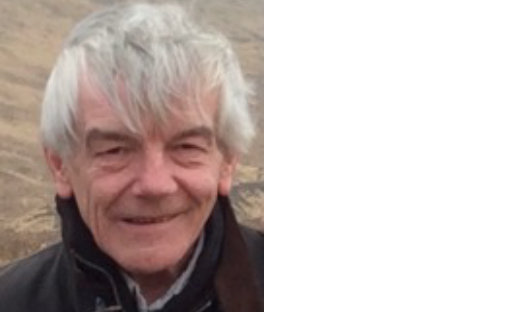The processes underlying biodiversity and climate are non-linear. What does this rather daunting statement imply? Roughly this - if the forces driving change are reversed in a linear world, we return to the original state of affairs. When non-linear relationships pertain, no such symmetry is assured; the application and removal of a force may not lead to a return to the previous state. Some effects remain after the initial causes are removed, a phenomenon referred to as hysteresis.
The term hysteresis was coined for application to scientific phenomena in 1881 by James Alfred Ewing. His experimental research on ferric metals, around the time of the disastrous collapse of the Tay Rail Bridge outside his home city of Dundee in late December 1879, indicated that the application and then reversal of a magnetising force was not followed by a return to the previous state. Ewing felt that this violation of the reversibility properties of James Clerk Maxwell`s equations for electromagnetic fields would arise in a wider set of contexts. He was right. Hysteresis is pervasive throughout nature, with earth-changing implications, quite literally, both at the local and global scale.
As a localised example, the state of a freshwater lake depends not just on the contemporary run-off of phosphorus and other pollutants from activities on the surrounding land but also past run-offs. Once the accumulated net run-off exceeds a critical value, or ‘tipping point’, the lake switches from an oligotrophic state that is able to provide high levels of environmental services, including drinking water, to a eutrophic state, with substantial environmental degradation. However, here is the twist. A gradual reduction in run-off to a rate that previously supported oligotrophy will not, in general, shift the lake back to its original state. Instead, drastic intervention to reduce net run-off may be required – in other cases, restoration may be completely impossible.

Some readers may find this counter-intuitive, in which case the metaphor of an aeroplane provided by the environmentalist Paul Ehrlich may be helpful. He likened the pathway whereby a stable ecosystem could be tipped into a degraded regime in terms of the rivets of an aircraft being removed one at a time from the plane’s frame. The probability of a subsequent crash may rise slowly at the start but eventually rises sharply to certainty, and there is no turning back at that stage!
The disruption could catapult the Northern Hemisphere into another Ice Age.
Even more dramatically, global irreversibility risks lurk in large parts of the biosphere, such as the oceans. The North Atlantic drift is partly responsible for supporting warmer climates on northerly seaboards than the latitudinal positions would suggest. However, glacial meltwaters tend to disrupt this flow. Higher meltwater inflow would see this ocean current switch from an ‘on’ to an ‘off’ position at some critical point. A later return to glacial meltwater flows that were previously consistent with the North Atlantic drift being ‘on’ would not, on its own, be sufficient to restore this ocean current. The disruption could catapult the Northern Hemisphere into another Ice Age.
A central concern of the 2021 COP26 meeting in Glasgow will be the speed at which greenhouse gas emissions must be reduced to stabilise their stock in the atmosphere. The so-called net-zero target is designed to ensure a global temperature increase of no more than 1.5 degrees centigrade relative to the Industrial Revolution. Arguments for slower action to reduce global emissions tend to rely on longer-term technical progress in areas such as carbon capture or the holy grail of nuclear fusion - making mitigation less costly in the future. Hysteresis analysis provides a powerful counterargument, a reason for acting sooner rather than later. In a non-linear world haunted by hysteresis, it costs a lot less to maintain our present climate than it would to degrade it and then restore it. This is nature’s warning for COP26.
Rod Cross

Rod Cross is Emeritus Professor of Economics at the University of Strathclyde, where his main research interest has been in the hysteresis analysis of economic systems. He has held academic posts at Manchester, Queen Mary London, St. Andrews and Aix-Marseille. In addition, he has worked on a consultancy basis for various central banks and finance ministries. He was Harold's undergraduate economics tutor at St. Andrews, and the two have remained friends ever since.
Get Harold's Herald delivered to your inbox

